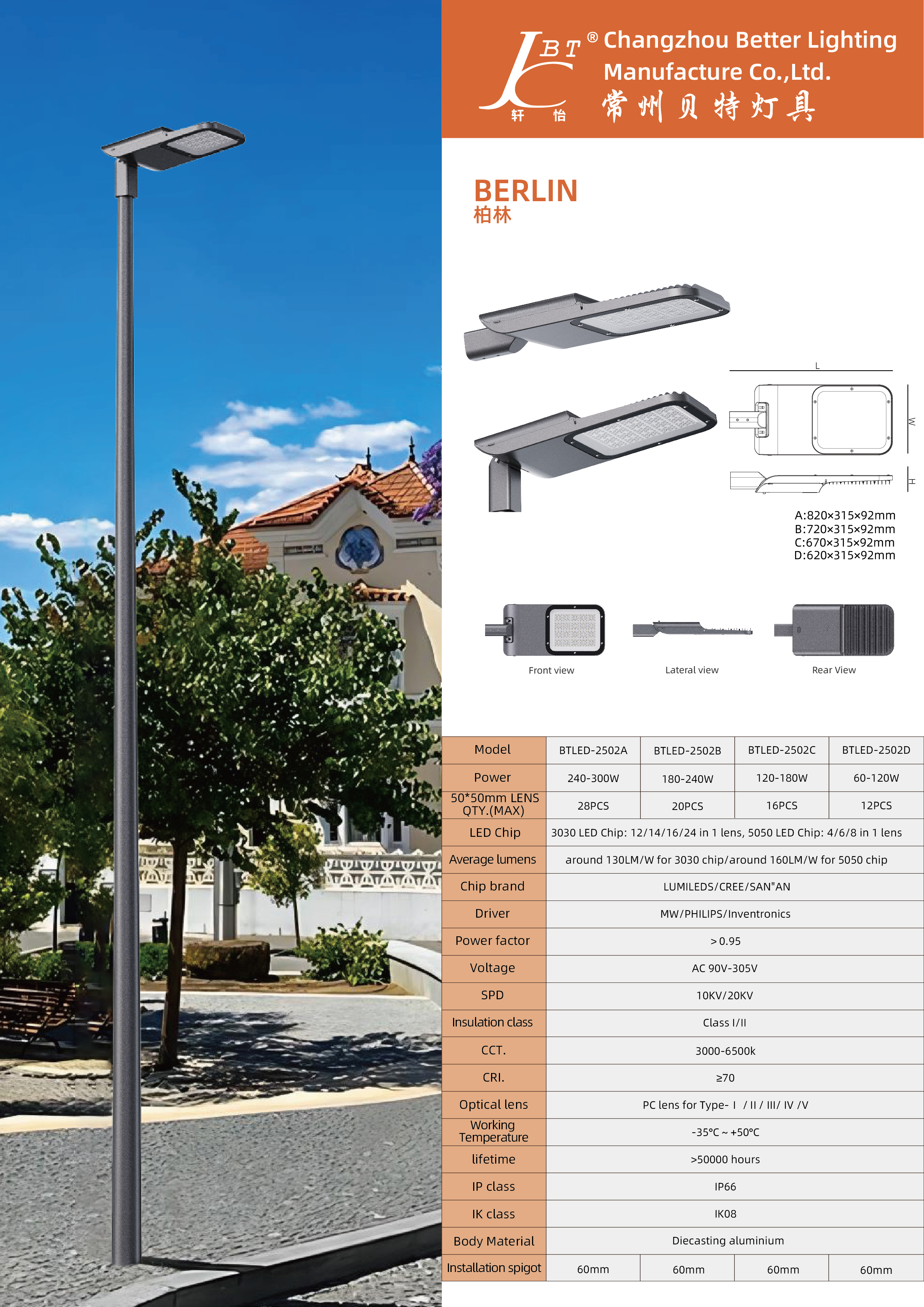A deep dive into the LED lighting segment reveals its increasing penetration beyond indoor applications like homes and buildings, expanding into outdoor and specialized lighting scenarios. Among these, LED street lighting stands out as a typical application showcasing strong growth momentum.
Inherent Advantages of LED Street Lighting
Traditional streetlights typically use high-pressure sodium (HPS) or mercury vapor (MH) lamps, which are mature technologies. However, compared to these, LED lighting boasts numerous inherent advantages:
Environmentally Friendly
Unlike HPS and mercury vapor lamps, which contain toxic substances like mercury requiring specialized disposal, LED fixtures are safer and more eco-friendly, posing no such hazards.
High Controllability
LED streetlights operate via AC/DC and DC/DC power conversion to supply the required voltage and current. While this increases circuit complexity, it offers superior controllability, enabling quick on/off switching, dimming, and precise color temperature adjustments—key factors for implementing automated smart lighting systems. LED streetlights are, therefore, indispensable in smart city projects.
Low Energy Consumption
Studies show that street lighting generally accounts for around 30% of a city's municipal energy budget. The low energy consumption of LED lighting can significantly reduce this substantial expense. It is estimated that global adoption of LED streetlights could reduce CO₂ emissions by millions of tons.
Excellent Directionality
Traditional road lighting sources lack directionality, often resulting in insufficient illumination in key areas and unwanted light pollution in non-target areas. LED lights, with their superior directionality, overcome this issue by illuminating defined spaces without affecting surrounding areas.
High Luminous Efficacy
Compared to HPS or mercury vapor lamps, LEDs offer higher luminous efficacy, meaning more lumens per unit of power. Additionally, LEDs emit significantly lower infrared (IR) and ultraviolet (UV) radiation, resulting in less waste heat and reduced thermal stress on the fixture.
Extended Lifespan
LEDs are renowned for their high operating junction temperatures and long lifespans. In street lighting, LED arrays can last up to 50,000 hours or more—2-4 times longer than HPS or MH lamps. This reduces the need for frequent replacements, resulting in significant savings in material and maintenance costs.

Two Major Trends in LED Street Lighting
Given these significant advantages, the large-scale adoption of LED lighting in urban street lighting has become a clear trend. However, this technological upgrade represents more than a simple "replacement" of traditional lighting equipment—it is a systemic transformation with two noteworthy trends:
Trend 1: Smart Lighting
As previously mentioned, LEDs' strong controllability enables the creation of automated smart street lighting systems. These systems can automatically adjust lighting based on environmental data (e.g., ambient light, human activity) without manual intervention, offering significant benefits. Additionally, streetlights, as part of urban infrastructure networks, could evolve into smart IoT edge nodes, incorporating functions like weather and air quality monitoring to play a more prominent role in smart cities.
However, this trend also poses new challenges for LED streetlight design, requiring the integration of lighting, power supply, sensing, control, and communication functions within a constrained physical space. Standardization becomes essential to address these challenges, marking the second key trend.
Trend 2: Standardization
Standardization facilitates seamless integration of various technical components with LED streetlights, significantly enhancing system scalability. This interplay between smart functionality and standardization drives the continuous evolution of LED streetlight technology and applications.
Evolution of LED Streetlight Architectures
ANSI C136.10 Non-Dimmable 3-Pin Photocontrol Architecture
The ANSI C136.10 standard only supports non-dimmable control architectures with 3-pin photocontrols. As LED technology became prevalent, higher efficiency and dimmable functionalities were increasingly demanded, necessitating new standards and architectures, such as ANSI C136.41.
ANSI C136.41 Dimmable Photocontrol Architecture
This architecture builds upon the 3-pin connection by adding signal output terminals. It enables integration of power grid sources with ANSI C136.41 photocontrol systems and connects power switches to LED drivers, supporting LED control and adjustment. This standard is backward-compatible with traditional systems and supports wireless communication, providing a cost-effective solution for smart streetlights.
However, ANSI C136.41 has limitations, such as no support for sensor input. To address this, the global lighting industry alliance Zhaga introduced the Zhaga Book 18 standard, incorporating the DALI-2 D4i protocol for communication bus design, solving wiring challenges and simplifying system integration.
Zhaga Book 18 Dual-Node Architecture
Unlike ANSI C136.41, the Zhaga standard decouples the power supply unit (PSU) from the photocontrol module, allowing it to be part of the LED driver or a separate component. This architecture enables a dual-node system, where one node connects upwards for photocontrol and communication, and the other connects downwards for sensors, forming a complete smart streetlighting system.
Zhaga/ANSI Hybrid Dual-Node Architecture
Recently, a hybrid architecture combining the strengths of ANSI C136.41 and Zhaga-D4i has emerged. It uses a 7-pin ANSI interface for upward nodes and Zhaga Book 18 connections for downward sensor nodes, simplifying wiring and leveraging both standards.
Conclusion
As LED streetlight architectures evolve, developers face a wider array of technical options. Standardization ensures smooth integration of ANSI- or Zhaga-compliant components, enabling seamless upgrades and facilitating the journey toward smarter LED street lighting systems.
Post time: Dec-20-2024
